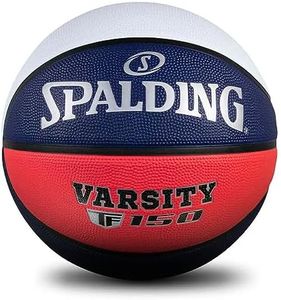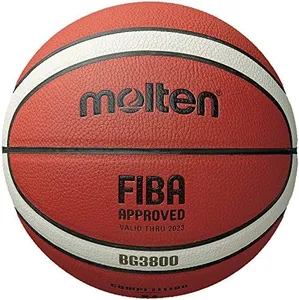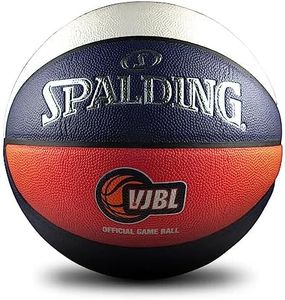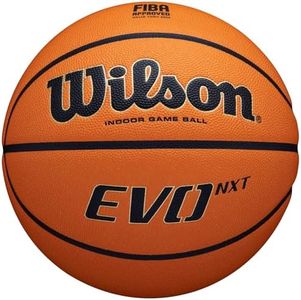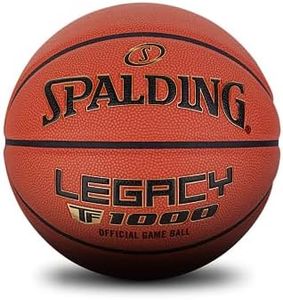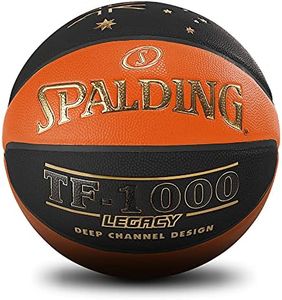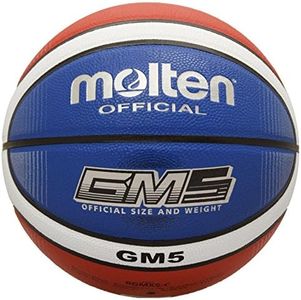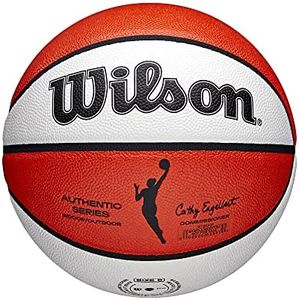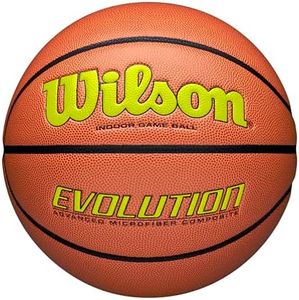We Use CookiesWe use cookies to enhance the security, performance,
functionality and for analytical and promotional activities. By continuing to browse this site you
are agreeing to our privacy policy
10 Best Basketballs
From leading brands and best sellers available on the web.Buying Guide for the Best Basketballs
Choosing the right basketball may seem simple, but there are a few important things to consider so you can get one that fits your playing style, skill level, and the environment where you’ll use it most. Understanding the features that matter will help you focus on what’s significant, rather than just picking based on looks or brand. Let’s break down the most important aspects to think about when choosing a basketball.MaterialThe material a basketball is made of determines where and how you should use it, as well as how it feels in your hands. Basketballs are commonly made from leather, synthetic (composite), or rubber. Leather balls are mostly for indoor use as they're softer and become better with use, while synthetic balls can be used both indoors and outdoors and are easier to maintain. Rubber balls are the toughest and are ideal for outdoor playgrounds or rough surfaces. Choose genuine leather if you’ll be playing mainly on indoor courts, synthetic if you want versatility, and rubber if you’ll play mostly outside or are just starting out.
SizeBasketballs come in different sizes, and picking the right one makes the game more comfortable and helps develop proper technique. Size 7 is official men’s size, size 6 is for women and youth (typically ages 12 and up), and size 5 is for children under 12. If you’re choosing for a child, go by their age group; for adults or teens, use the recommended official size for your league or type of play. Proper size helps with grip, shooting form, and reduces the risk of injury.
Grip and TextureGrip refers to how easily you can hold and control the ball—an important factor for dribbling and shooting. Basketballs with a more textured surface and deeper grooves usually offer better grip, especially for beginners or players with smaller hands. If your hands are smaller or if you value easier ball control, opt for a ball with a bumpy, pebbled surface and distinct channels. For more experienced players or those used to indoor play, a smoother texture might feel better.
BounceThe bounce of a basketball should be consistent so you can rely on it when dribbling and shooting. A good basketball should rebound to a predictable height when dropped from shoulder height. Basketballs made specifically for outdoor use often have a bounce that handles rougher surfaces and keeps its shape, while indoor balls are made for the even surface of a wooden court. Test the ball’s bounce if you can, and pick one suitable for where you’ll mostly play.
WeightStandard basketballs are designed to a certain weight, but some can be heavier or lighter for training or recreational purposes. Using the right weight helps with skill development and prevents strain. Beginners and children may find a slightly lighter ball easier to handle, while experienced players should stick to regulation weight. If unsure, stick to the official weight for your size category—it’s what you’ll most likely use in games or leagues.

